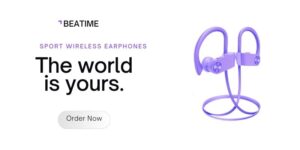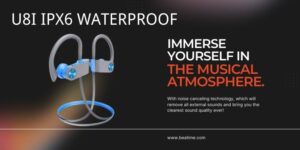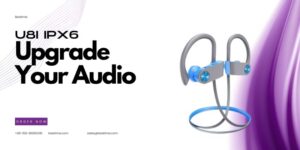
Bluetooth has reshaped how we connect and enjoy audio devices. Yet, it brings unique opportunities and hurdles for wireless audio transmission.
Bluetooth simplifies audio connections with wireless, energy-efficient, and universally compatible solutions. However, it faces quality, latency, and interference challenges.
Stay tuned to explore how Bluetooth technology balances these strengths and limitations in wireless audio transmission.
Table of Contents
What are the core benefits of Bluetooth in wireless audio?
Bluetooth offers unique advantages in wireless audio that cater to modern lifestyles and business needs.
It provides wireless convenience, compatibility across devices, and energy-efficient connections, making it ideal for portable and multifunctional use cases.

Key Benefits of Bluetooth in Audio
1. Convenience and Compatibility
Bluetooth eliminates cables, offering seamless audio transmission. Devices from different brands often support Bluetooth, ensuring widespread usability.
2. Energy Efficiency
Bluetooth’s low-energy design extends battery life for headphones, TWS earphones, and wearables. This feature is crucial for portable, long-use applications.
3. Enhanced Audio Codecs
Recent codecs like aptX and LDAC1 enable high-quality audio, narrowing the gap between wired and wireless sound fidelity.
4. Affordability and Scalability
Bluetooth’s affordability allows manufacturers to integrate it across products, creating a broad ecosystem of compatible devices.
What are the main limitations of Bluetooth technology in audio?
While Bluetooth is transformative, its limitations often impact the listening experience.
Audio quality, latency, interference, and range are significant challenges, especially for demanding use cases like gaming or professional audio work.
Addressing Bluetooth’s Audio Challenges
1. Audio Compression
Standard codecs like SBC compress audio, reducing fidelity. Advanced codecs improve quality but may not be universally supported.
2. Latency
Bluetooth latency is noticeable in gaming or video playback. Although low-latency codecs exist, they require both device and accessory compatibility.
3. Interference
Operating in the crowded 2.4 GHz band2 exposes Bluetooth to interference from Wi-Fi and other signals, affecting connection stability.
4. Range and Connectivity
Bluetooth has a limited range, typically 10 meters. Extended-range versions exist but aren’t widely adopted.
5. Security
Bluetooth’s wireless nature makes it vulnerable to hacking. Robust encryption and user vigilance are necessary for safe usage.
How does the future of Bluetooth address current challenges?
Bluetooth’s evolution promises solutions to its existing drawbacks, reshaping wireless audio’s potential.
Upcoming advancements, like Bluetooth LE Audio3, tackle latency, quality, and connectivity issues, making wireless audio even more reliable.
What’s Next for Bluetooth?
1. Bluetooth LE Audio
This new standard prioritizes efficiency and sound quality, allowing multiple devices to share a single stream without compromising audio fidelity.
2. Improved Codecs
Codecs like LC3 (Low Complexity Communication Codec) offer better compression and energy efficiency, ideal for next-generation audio devices.
3. Adaptive Connectivity
Bluetooth is integrating smart features like dynamic frequency hopping, which minimizes interference for stable connections.
4. Broader Applications
Future Bluetooth innovations include augmented reality audio and broadcast audio capabilities, enabling richer user experiences.
Conclusion
Bluetooth transforms wireless audio with its convenience and compatibility while addressing quality and connectivity challenges through constant innovation.
Footnotes
- AptX and LDAC codecs improve Bluetooth audio by delivering higher-quality sound with less compression, enabling better listening experiences for audiophiles and casual users.
- The 2.4 GHz band is a common frequency for Bluetooth but is prone to interference from Wi-Fi, microwaves, and other wireless devices, which can impact connection stability.
3.Bluetooth LE Audio is an emerging technology that improves efficiency, supports multi-stream connections, and offers better sound quality, making it essential for next-gen audio devices.









